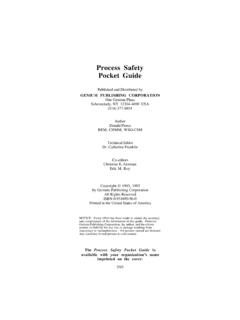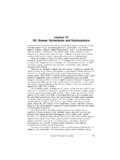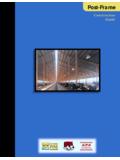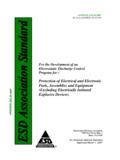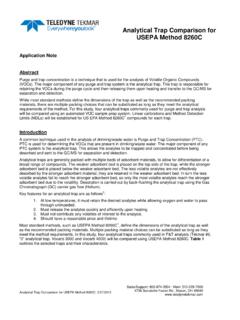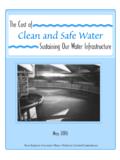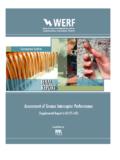Transcription of GUIDE TO ENVIRONMENTAL ANALYTICAL METHODS 5th …
1 GUIDE TOENVIRONMENTALANALYTICALMETHODS5th EditionEdited byRoy-Keith Smith, PhDApichemical ConsultantsGenium Publishing Corporation1171 RiverFront Center, Amsterdam, NY 12010 (518) PUBLISHING CORPORATIONG uide to ENVIRONMENTAL ANALYTICAL MethodsTable of Contents Pa g e IntroductioniiiAnalytical METHODS Organic Constituents1 Herbicides (chlorinated) by GCMethod Comparison3 Analyte Listing8 Pesticides (organochlorine) and PCBs by GCMethod Comparison9 Analyte Listing18 Semivolatile Organic Compounds by GC/MSMethod Comparison20 Analyte Listing28 Volatile Organic Compounds by GC/MSMethod Comparison37 Analyte Listing46 Volatile Organic Compounds by GCMethod Comparison50 Analyte Listing58 ANALYTICAL METHODS Inorganic Constituents61 Cyanide (total and amenable)Method Comparison62 Organic Carbon (total)
2 Method Comparison69 Mercury by Cold Vapor Atomic Absorption Method Comparison71 Trace Metals by Flame & Graphite FurnaceAtomic Absorption SpectroscopyMethod Comparison76 Analyte Listing80 Trace Metals by ICP-AESM ethod Comparison82 Analyte Listing87 Trace Metals by ICP-MSMethod Comparison88 Analyte Listing94 ANALYTICAL METHODS Anions9 5 Multi-Analyte Analysis of AnionsMethod Comparison95 Analyte Listing97 Sampling Procedures and Preparation9 9 Method Reference and Sampling GuidelinesSolid and Aqueous100 Drinking Water122 Sampling Extraction METHODS (solids)SW-846124 Sampling Extraction METHODS (liquids)SW-846128 Sampling Cleanup MethodsSW-846130 Sampling Extraction and Cleanup MethodsStandard METHODS , 20th Edition 134 EPA 500 Series136 CFR 40138 CLP140 Elemental Analysis141 APPENDICESA.
3 Tables Extracted from Original DocumentationEPA Contract Laboratory Program (CLP) - Organic Statement of WorkA-1 EPA Contract Laboratory Program (CLP) - Inorganic Statement of WorkA-18 EPA 200 SeriesA-22 EPA 500 SeriesA-31 EPA 600 SeriesA-74 GENIUM PUBLISHING CORPORATIONG uide to ENVIRONMENTAL ANALYTICAL MethodsTable of Contents, continued Pa g e APPENDICESS tandard METHODS for the Examination of Water and Wastewater, 20th EditionA-90SW-846, EPA Test METHODS for Evaluating Solid WasteA-114B . Organic Analyte Cross-Reference to MethodsB-1C . Inorganic Analyte Cross-Reference to MethodsC-1D.
4 SW-846 HistoryD-1E. Terms and AbbreviationsE-1F. ReferencesF-1 GENIUM PUBLISHING CORPORATIONiiiINTRODUCTION TO 5th EDITIONThe fifth edition of the GUIDE to ENVIRONMENTAL ANALYTICAL METHODS covers the massivechanges that have continued to take place to EPA METHODS , affecting organic andinorganic determinative METHODS along with preparative and sampling the last edition of The GUIDE , EPA SW846 has been updated with many newmethods; existing METHODS have been revised; and more METHODS removed. Forinstance the large number of individual flame AA and graphite furnace AA methodsfor metals have been collapsed into general METHODS 7000B and 7010, IV to SW-846 has been out in distribution for several years however the legalstatus of the update is uncertain in many States as the Office of Solid Waste has notpromulgated the update, choosing instead to hold fast to the idea of SW-846 asguidance rather than regulation.
5 I have chosen to update this book to Update IV ofthe Third Edition of SW-846 as many laboratories are already using it. Previouseditions of this book present appropriate information about earlier SW-846 changes from SW846 Final Update III are so expansive that the Method StatusTable in Appendix D of this fifth edition has been revised, listing current promulgatedmethods and available more recently revised CLP data are extensively revised to reflect the newest Statements of Work:inorganics , December, 2001, and organics , May, 1999 , December, 2000.
6 Further, tabular data on the CLP organics have beenexpanded to include the low concentration method in a side-by-side comparison withthe multi-media, multi-concentration Statement of Work. The inorganic SOW isnoteworthy as no FLAA nor GFAA techniques are included in it and the dreadedGFAA decision flowchart has been important addition to the fifth edition is tabular comparison of multi-anion analysisby ion chromatography and capillary electrophoresis. These ANALYTICAL techniques arebecoming more visible within the industry and the regulatory framework.
7 Theincreased number of practitioners of these METHODS justifies their discussion and data relating to the analysis of PCB congenors in SW-846 Method8082A has been deleted, as it is an inadequate method for the stated objective. TheOffice of Water is working on Method 1668, which is a high resolution massspectrometer technique capable of identifying and quantitating most of the 209 PCBcongenors including the individual planar (toxic) EPA 200 series, 500 series, 600 series, and METHODS found in the 20th Edition ofStandard METHODS for the Examination of Water and Wastewater contained in thebook have been reviewed for changes and revised where must be kept in the forefront that despite the wishes and practices of many in thelaboratory community, EPA still maintains a strict separation between program EPA Method 8270 (regardless of version) is not a permissible replacement forEPA Method 625 for the analysis of semivolatile organics in wastewater.
8 Let thereader be aware that even though they may think Method 8270 is the better method,Clean Water Act regulations still require the use of Method 625. And Method 625 haseasily recognizable differences from Method Smith, PhDApichemical ConsultantsGENIUM PUBLISHING CORPORATIONivHISTORY and ACKNOWLEDGMENTSThe GUIDE to ENVIRONMENTAL ANALYTICAL METHODS was originally developed from amethod comparison document called Variability in Protocols (VIP) published by theEPA Risk Reduction Engineering Laboratory in Cincinnati, Ohio. VIP provided a usefultool for understanding similarities and differences among commonly usedenvironmental test METHODS .
9 This concept was greatly expanded by NortheastAnalytical s staff with the first publication of the GUIDE to ENVIRONMENTAL AnalyticalMethods in 1992. Now in its fifth edition, and under new editorship, The GUIDE hasbecome a popular reference tool for all who work in the ENVIRONMENTAL Roy-Keith Smith retired in June, 2000 from his former position as QualityAssurance Manger and ANALYTICAL METHODS Manager with a prominent commercialenvironmental laboratory in the Southeast. His retirement has actually provided moretime for him to delve into the intricacies of the ENVIRONMENTAL industry, unhampered bythe day-to-day distractions of the laboratory.
10 Besides writing, Dr. Smith has been busyserving as an expert witness for ENVIRONMENTAL lawsuits, where his specialty offoundation destruction has been widely appreciated, and for teaching, presentingseminars, and laboratory consultations. He can be reached through GeniumPublishing, PUBLISHING CORPORATION1 Organic AnalytesAnalytical METHODS - Organic ConstituentsThe numerous ANALYTICAL METHODS for organic constituent testing have been organized intofive major categories: Herbicides (chlorinated) identified by gas chromatography Pesticides (organochlorine) and PCBs identified by gas chromatography Semivolatile organic compounds identified by gas chromatography/mass spectroscopy Volatile organic compounds identified by gas chromatography/mass spectroscopy Volatile organic compounds (aromatic and halogenated) identified by gaschromatographyWithin each category there is a section called Method Comparison that summarizes the keymethod requirements and components for each testing method.
